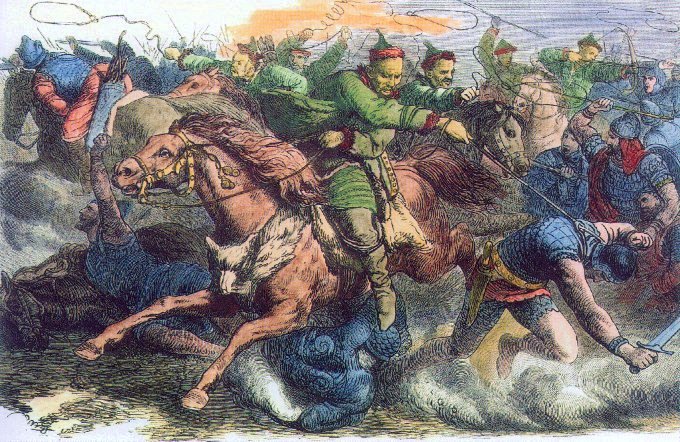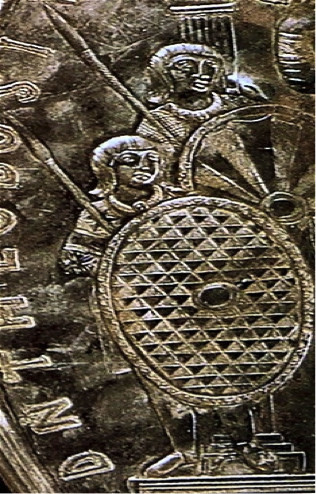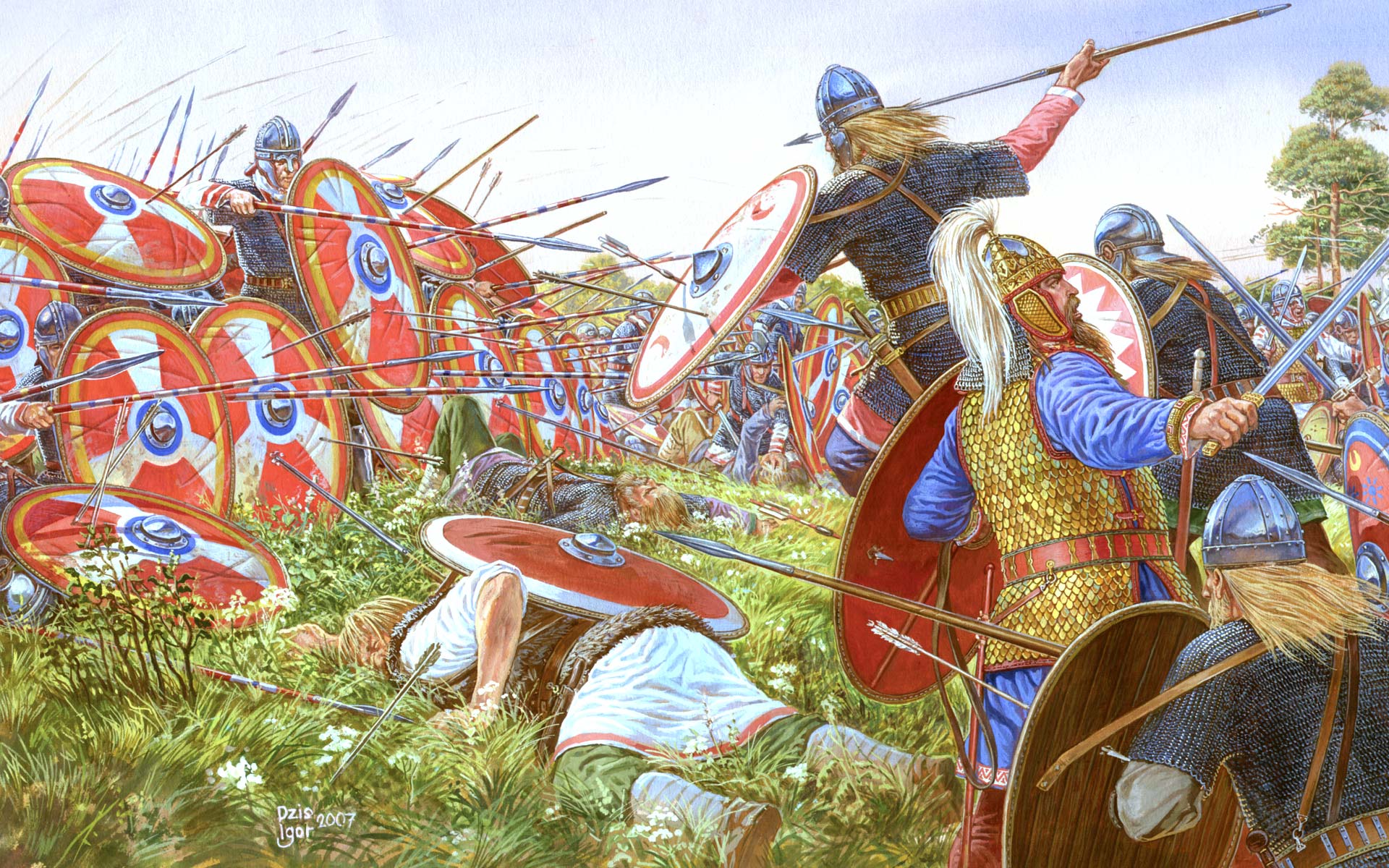By Ed Whelan, Contributing Writer, Classical Wisdom
The Battle of Adrianople (378 AD) was one of the most important battles in ancient history. It was one of Rome’s greatest defeats and left an Emperor missing, presumed dead… it was the beginning of the end of an empire.
Background to the Battle of Adrianople
The Roman Empire was already greatly weakened by the death of the Emperor Julius, the Apostate in Persia. When Valentinian became Emperor, he was able to stabilize the situation. He then appointed his brother, Valens (328-378), to be the ruler of the Roman East, despite the fact that was not an able soldier. Indeed, he once nearly resigned in a panic during a revolt! Valentinian died of a stroke in 375 AD and left the Western Empire to his son Gratian. It was at this moment that a crisis developed on the Danuban frontier.
The Coming of the Huns
The Goths had established kingdoms from the Black Sea to the Baltic. One day they were attacked by strange warriors on horseback, reputedly born of witches. These were the fearsome Huns. The Goths, in terror, fled before the fierce nomads and such was their fear that they were forced to seek refuge with their sometimes enemy, the Romans. The Goths and allied tribes at the Danube frontier, begged the Romans for refuge. Valens could not exactly refuse because he was fighting the Persians in the east and so had only a few troops in the Balkans.

Reluctantly, he agreed, and the Goths were permitted entry into Imperial territory.
It was expected that they would become farmers and serve in the military. However, things soon went very wrong. The Goths began to starve, and they became so desperate that they rose in a rebellion led by their leader Fritigern. They defeated a small Roman force and began to plunder the Balkan provinces of the Roman Empire.
It was expected that they would become farmers and serve in the military. However, things soon went very wrong. The Goths began to starve, and they became so desperate that they rose in a rebellion led by their leader Fritigern. They defeated a small Roman force and began to plunder the Balkan provinces of the Roman Empire.
Prelude to the Battle of Adrianople
Valens was campaigning against the Persian king Shapur and he could not deal with the crisis for two years. After reaching an agreement with the Persians, he finally turned his attentions to the Goths. He was offered assistance by his young nephew and Western Emperor, Gratian, who had recently won a minor victory over the Alemanni. Valens collected a large army and marched to confront the Goths without his nephew. Gratian urged his uncle to wait until he could join his army, but Valens was reluctant to do this. He had probably grown jealous of Gratian and wanted to win some glory on the battlefield for himself. So Valens forced his men to march to the Goths, where they were currently raiding in Thrace (modern Bulgaria).

The Battle of Adrianople
By the time the Romans encountered the Goths they were exhausted, but Valens was determined to fight them nonetheless. For two years they had plundered and killed Romans citizens and he wanted them to pay.
The Battle took place on the 9 August 378. While the two armies were approximately of equal size, about 15,000 to 20,000 each, the Goths had slightly more cavalry, who were very experienced. Valens, whose army was made up of archers, infantry and light and heavy cavalry, decided to attack even though he did not have numerical superiority. This was in part because he did not have good intelligence. His scouts told him that he had more men than Fritigern. This was incorrect as the Roman scouts had failed to find the bulk of the Gothic cavalry who were a short distance away, probably foraging for supplies. This was a catastrophic intelligence failure and was to prove very costly.

The Goths circled their wagons and created a defensive position, a tactic that was often used by German tribes. The Roman Emperor, confident of victory, rashly ordered his weary men to attack the circled wagons of the Goths and called his shield-archers to advance, but they were easily repulsed.
Then Valens ordered his heavy infantry to attack the circled wagons of the Goths. They were making some headway when the tide of the battle changed. The Gothic cavalry suddenly reappeared and they attacked the Roman heavy infantry in the rear. This caused panic among the Roman troops and the heavy infantry was nearly annihilated.

This was a grave setback for Valens but it should not have been fatal. Unfortunately, he was not an experienced commander and it appears that he failed to respond properly to the deteriorating situation. The Roman infantry began to panic and started to run, even though the Goths were not near them. Soon the entire Roman army was in a panic running from the battlefield. The Germans followed, easily caught up with the heavily armored infantry and then massacred them. Up to two-thirds of the Roman army was annihilated.
It was at this moment that Valens fled the field of battle and was apparently killed. His body was never found. When the young Emperor Gratian heard the news, he broke down and wept.
The aftermath of the battle of Adrianople
The Goths had won a total victory and they now controlled the Balkans. However, they could not take any major towns and cities because they did not have siege works. Gratian appointed Theodosius as Emperor and he was able to neutralize the Goths by turning them into allies.

However, the Romans were greatly weakened and the Germans were, in reality, not allies but an independent force in the Empire. The Goths undermined the Romans significantly and destabilized the Empire. In 410, under the leadership of Alaric, they even sacked Rome itself.
It’s clear that the Battle of Adrianople was, in many ways, the beginning of the end of the Western Roman Empire.










No comments yet. You should be kind and add one!
Our apologies, you must be logged in to post a comment.